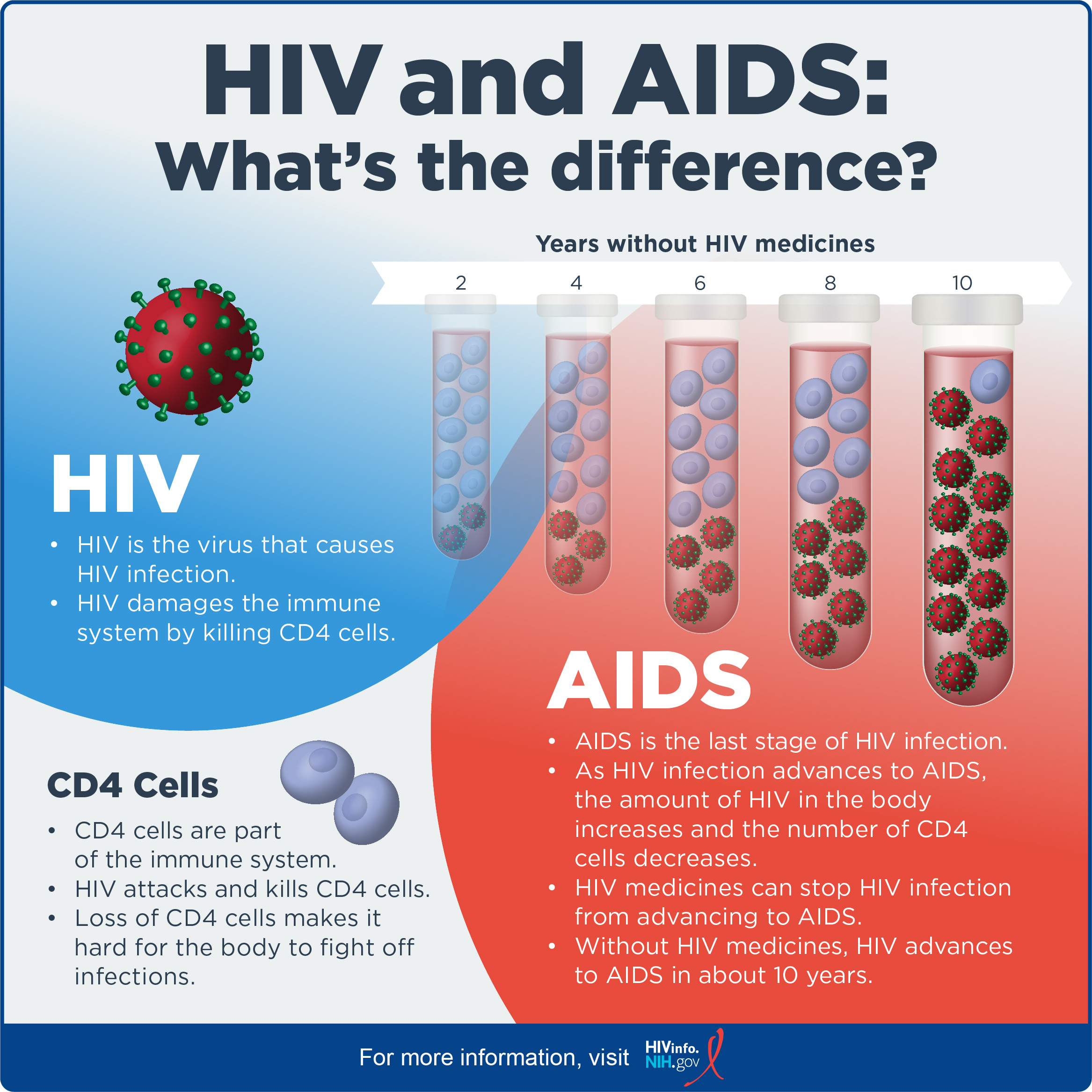- Published on
What Is AIDS?
- Authors
- Name
- Jake Konigsberg
- Role
- Founder
AIDS, acquired immunodeficiency syndrome, results in the body being unable to fight against infection. AIDS arises from HIV, human immunodeficiency virus. HIV spreads through sexual contact, contact with infected blood, sharing of needles, and through pregnancy. Once one is infected with HIV, it takes years for it to eventually become AIDS.
HIV particles work by entering T-helper cells in the immune system. These cells are essential for the immune system as they assist in most essential immune functions such as releasing molecules (cytokines) that will be used to activate other immune cells. The HIV particles use these cells and their machinery to replicate and then leave the cell to invade other T-helper cells. The viral particles begin in the lysogenic viral cycle meaning they do not kill the T-helper cells right away. Rather, they keep invading more and more T-helper cells and then kill them. This cycle enables HIV particles to keep invading cells without much of an immune response, and then when they start to kill the T-helper cells, it is already too late for an adequate immune response. Without T-helper cells, the body is severely immunodeficient as it can not initiate an adequate immune response.
HIV is unique in that it is a retrovirus. Most viral particles carry deoxyribonucleic acid (DNA) which can be used to produce messenger ribonucleic acid (mRNA). The mRNA leaves the nucleus and goes to ribosomes where amino acids are produced forming proteins. Unlike a normal virus, HIV does not contain DNA but rather RNA. The ribonucleic acid goes through an enzyme called reverse transcriptase where the RNA is converted to DNA. The fact that HIV is a retrovirus is notable because retroviruses are very efficient at delivering their genes to target cells and have high expression. The high expression is due to DNA having introns which are regions of DNA not expressed in the mRNA whereas exons are expressed in the mRNA. When DNA is converted to mRNA, the introns have to be spliced and removed. However, when converting the mRNA to DNA, there is no need for splicing the introns as only the expressed regions will be in the mRNA in the first place. Therefore, the RNA of the HIV particles will be fully expressed making the fact that HIV is a retrovirus beneficial because it is highly expressed making it a powerful promoter.
